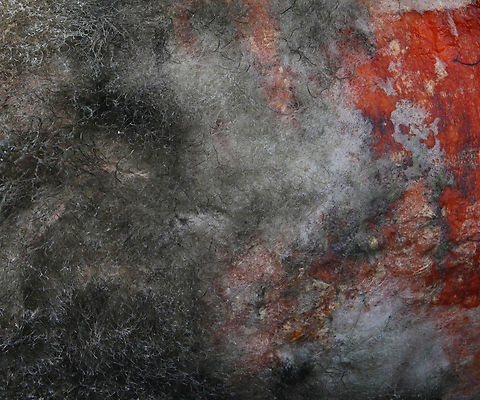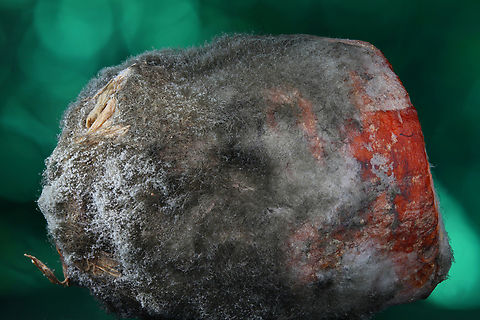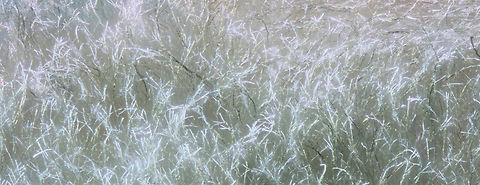
Appearance
A key characteristic of this pathogen is its ability to produce black resting structures known as sclerotia and white fuzzy growths of mycelium on the plant it infects. These sclerotia give rise to a fruiting body in the spring that produces spores in a sac which is why fungi in this class are called sac fungi. This pathogen can occur on many continents and has a wide host range of plants. When "S. sclerotiorum" is onset in the field by favorable environmental conditions, losses can be great and control measures should be considered.
Behavior
The lifecycle of "Sclerotinia sclerotiorum" can be described as monocyclic, as there are no secondary inoculums produced. During late summer to early fall, the fungus will produce a survival structure called a sclerotium either on or inside the tissues of a host plant. "S. sclerotiorum" sclerotia can remain viable for at least three years and germinate to produce fruiting bodies called apothecia, which are small, thin stalks ending with a cup-like structure about 3–6 mm in diameter. The cup of the apothecium is lined with asci, in which the ascospores are contained. When the ascospores are released from the asci, they are carried by the wind until they land on a suitable host. The ascospores of "S. sclerotiorum" only infect the flower of susceptible hosts and begin to invade the host's tissues via mycelium, causing infection. "S. sclerotiorum" is capable of invading nearly all tissue types including stems, foliage, flowers, fruits, and roots. Eventually white, fluffy mycelium will begin to grow on the surface of the infected tissues. At the end of the growing season, "S. sclerotiorum" will once again produce sclerotia. The sclerotia will then remain on the surface of the ground or in the soil, on either living or dead plant parts until the next season. The lifecycle will then continue respectively.There are two theories contending to explain the majority of "S. sclerotiorum" virulence: The oxalate-dependent theory and the pH-dependent theory. The oxalate theory was very credible because ultraviolet mutants producing knockout of oxalic acid production do have drastically reduced virulence. Similar results have also obtained with "Botrytis cinerea", similarly an oxalic acid producing pathogen, with similar knockouts. However Davidson et al 2016 and others have created transgenic hosts for oxalate oxidase and oxalate decarboxylase and charted the results day by day. They find that "initial" infection is not noticeably dependent on oxalate. This supports the pH theory, with oxalates being merely a part of pH.

Habitat
The pathogenic fungus "Sclerotinia sclerotiorum" proliferates in moist and cool environments. Under moist field conditions, "S. sclerotiorum" is capable of completely invading a plant host, colonizing nearly all of the plant's tissues with mycelium. Optimal temperatures for growth range from 15 to 21 degrees Celsius. Under wet conditions, "S. sclerotiorum" will produce an abundance of mycelium and sclerotia. Like most fungi, "S. sclerotiorum" prefers darker, shadier conditions as opposed to direct exposure to sunlight. For soybeans specifically, optimal conditions include canopy temperatures less than 28°C and plant surface wetness for 12–16 h on a daily basis or continuous surface wetness for 42–72 h.References:
Some text fragments are auto parsed from Wikipedia.